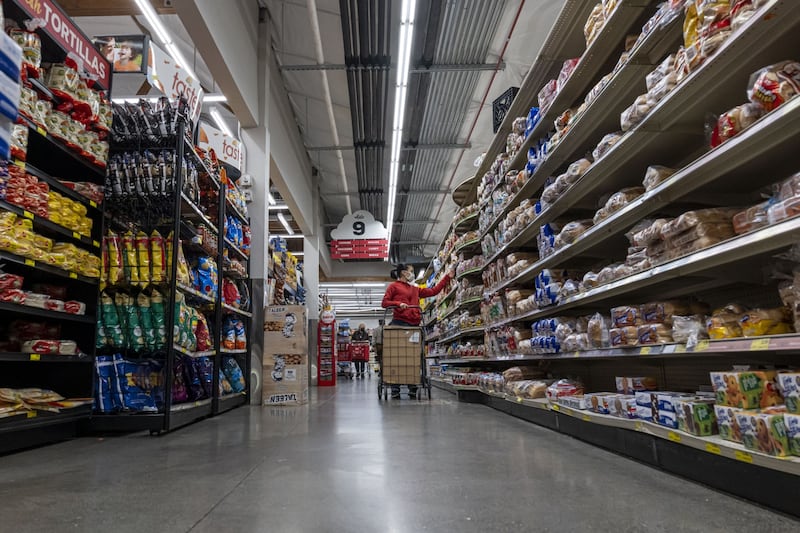Global food prices declined from near a record high at the end of last year, offering some respite to consumers and governments facing a wave of inflationary pressures.
A United Nations index tracking everything from grains to meat fell by 0.9 per cent in December, potentially helping to ease the run-up in prices of grocery store products. Still, the gauge remains near 2011’s all-time high and average prices jumped about 28 per cent in 2021, the most in 14 years.
Prices have surged on the back of harvest setbacks and high freight rates, as well as labour shortages and an energy crisis that has hit supply chains. Those issues will remain at the fore as farmers face uncertain weather and the prospect of fertiliser shortages in the months ahead. The costs have trickled through to supermarkets, piling pressure on officials and household budgets and worsening hunger, particularly in poor nations.
Food costs are unlikely to stabilise for a while yet, according to Abdolreza Abbassian, a senior economist at the UN’s Food and Agriculture Organisation.
“Nothing fundamentally changed over the last two to three months to make us feel any degree of optimism that the food market is going to resettle at more steady or even lower prices,” he said. “All of the uncertainties are right there, they haven’t disappeared, which means that anything is still possible.”
The fall in food prices last month was mainly driven by vegetable oils and sugar, the FAO said on Thursday.
Anger over inflation recently led to violent protests in Kazakhstan, while Sri Lanka unveiled a $1 billion package to temper concerns over pricey food and medical items. Countries including Ukraine, Russia and Argentina have also taken steps to keep food costs in check.
Weather worries still abound across major crop suppliers, as the La Nina weather pattern disrupts typical growing conditions. Dryness in parts of Brazil and Argentina is trimming expectations for bountiful soy and corn harvests. In Malaysia, recent floods have inundated some palm-oil plantations. And Australia faced a November deluge that curbed the quality of its wheat.
The recent energy crunch has sent fertiliser prices higher too, threatening to further add to food production costs. There are already signs that farmers are cutting back on nutrient purchases or shifting from grains to less fertiliser-intensive crops.
Inflation is also contributing to the world’s hunger crisis, with higher prices for everything from fuel to housing cutting into what people can spend on food. Roughly a 10th of the global population was undernourished in 2020, when the Covid-19 pandemic hit – and food costs have jumped much more since then.
In other moves to combat rising prices or tight supplies, Thailand this week imposed a ban on hog exports until early April. US President Joe Biden promised to “fight for fairer prices” for farmers and consumers in a bid to tackle meat-price inflation, and purchase limits have been reintroduced in hundreds of Australian supermarkets as cases of the Omicron variant of Covid-19 hobble supply chains.





